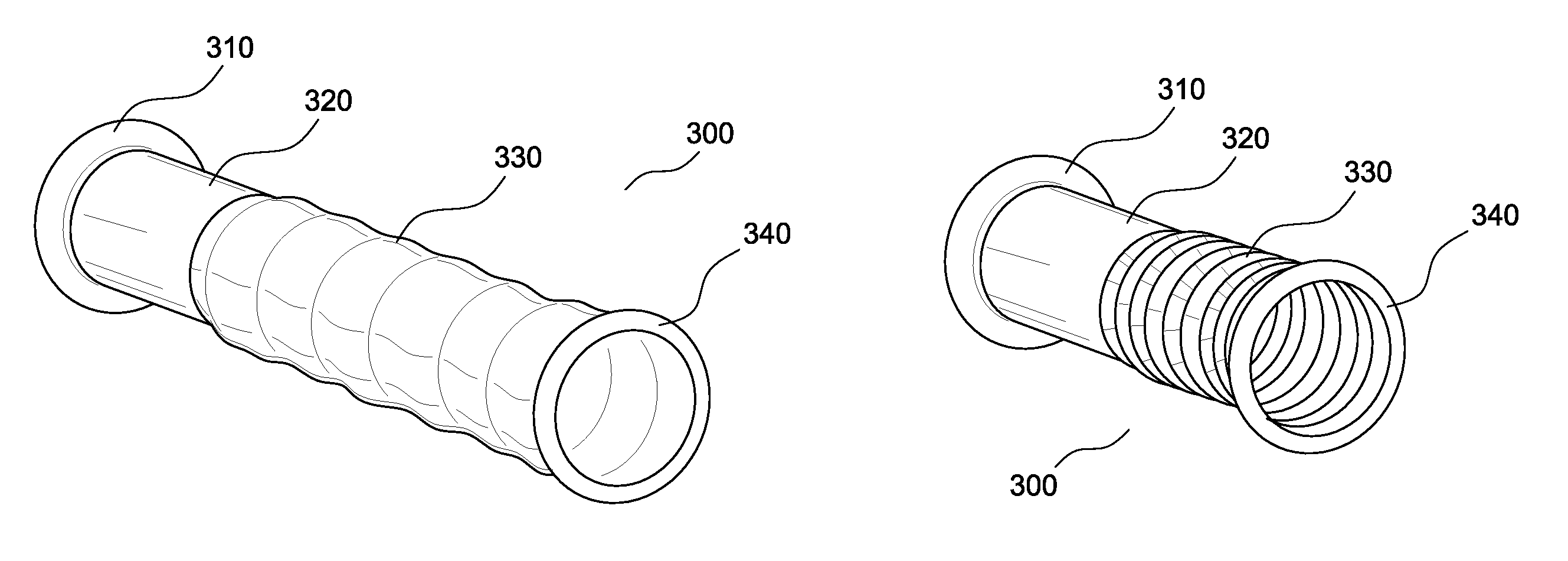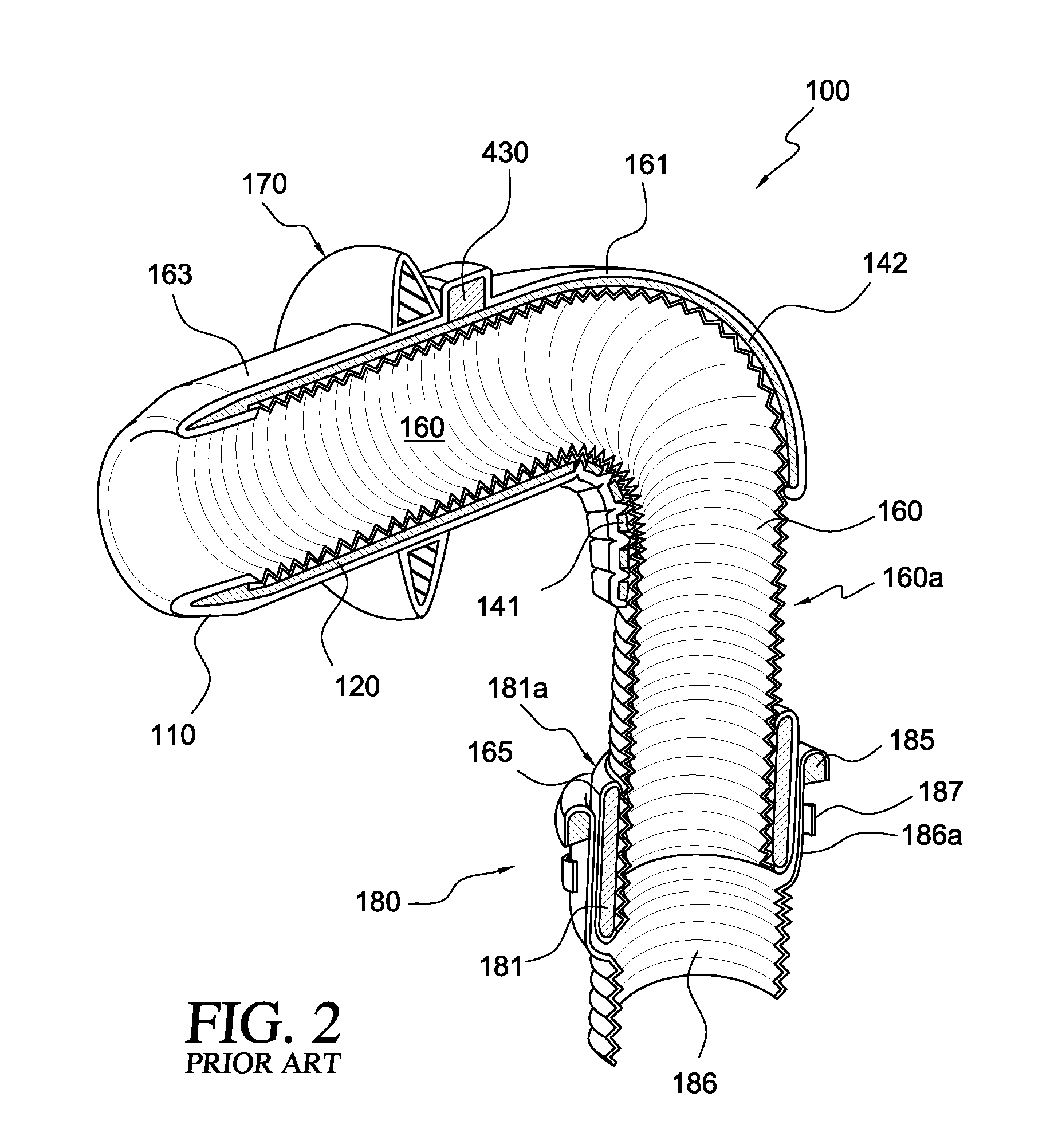Applicator, assembly, and method for connecting an inlet conduit to a hollow organ
a technology of inlet conduit and hollow organ, which is applied in the field of application, assembly and method of connecting an inlet conduit to a hollow organ, can solve the problems of significant blood loss, inability to preload, and blood entering the enclosur
- Summary
- Abstract
- Description
- Claims
- Application Information
AI Technical Summary
Benefits of technology
Problems solved by technology
Method used
Image
Examples
Embodiment Construction
[0070]Referring now to the figures, FIGS. 3A and 3B illustrate an exemplary hemostatic connection assembly of the invention. Hemostatic connection assembly 300 preferably comprises an organ wall connection portion 310 adapted to connect to a wall of a hollow organ, a cuff portion 320, an extension portion 330, and a seal ring portion 340. FIG. 3A shows hemostatic connection assembly 300 with extension portion 330 in an extended state, and FIG. 3B shows hemostatic connection assembly 300 with extension portion 330 in a collapsed or compressed state.
[0071]On one end of hemostatic connection assembly 300, extension portion 330 (which may be referred to as a sewing cuff extension herein) is connected to cuff portion 320 (which may be referred to as a sewing cuff herein). The connection between cuff portion 320 and extension portion 330 is preferably a removable connection. The connection between extension portion 330 and cuff portion 320 may be of any suitable type, such as an adhesive ...
PUM
 Login to View More
Login to View More Abstract
Description
Claims
Application Information
 Login to View More
Login to View More - R&D
- Intellectual Property
- Life Sciences
- Materials
- Tech Scout
- Unparalleled Data Quality
- Higher Quality Content
- 60% Fewer Hallucinations
Browse by: Latest US Patents, China's latest patents, Technical Efficacy Thesaurus, Application Domain, Technology Topic, Popular Technical Reports.
© 2025 PatSnap. All rights reserved.Legal|Privacy policy|Modern Slavery Act Transparency Statement|Sitemap|About US| Contact US: help@patsnap.com



